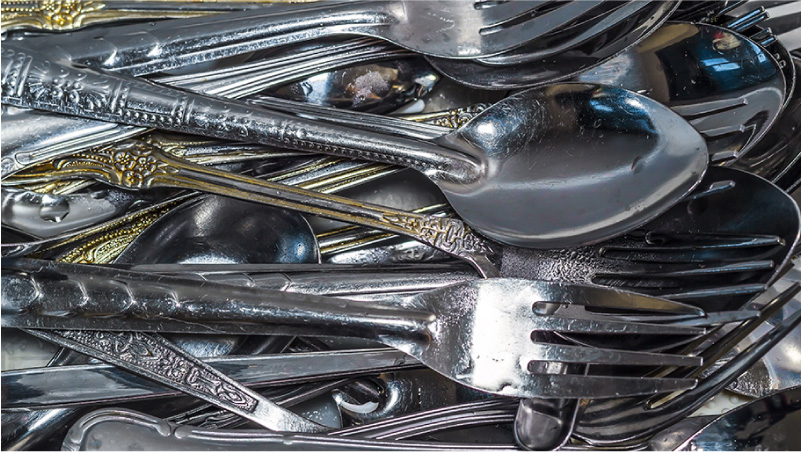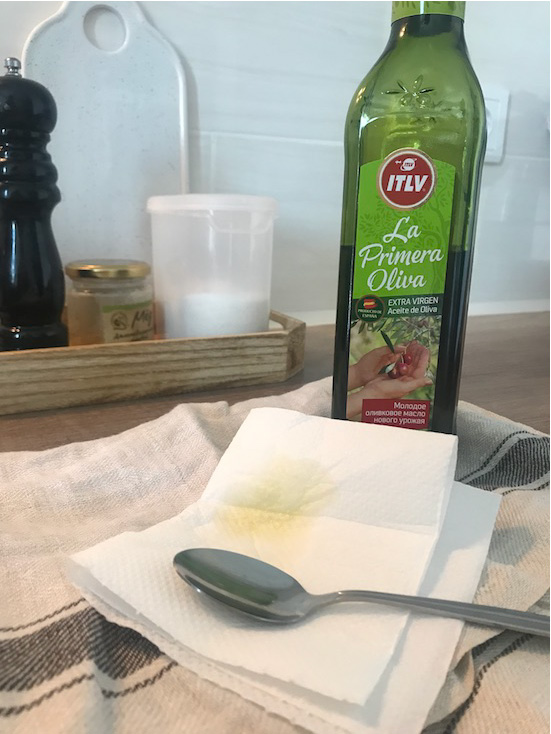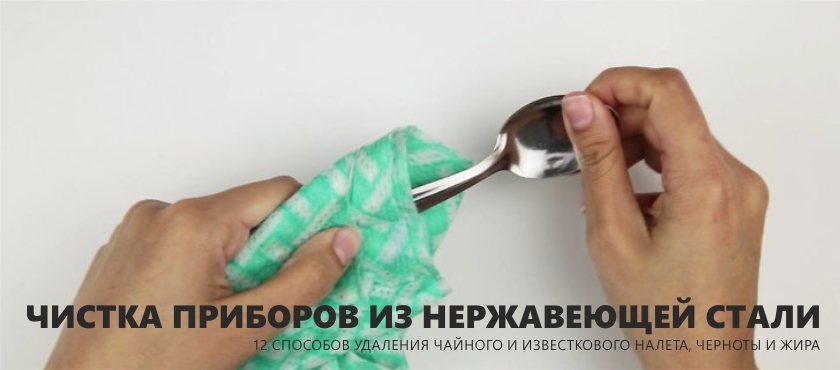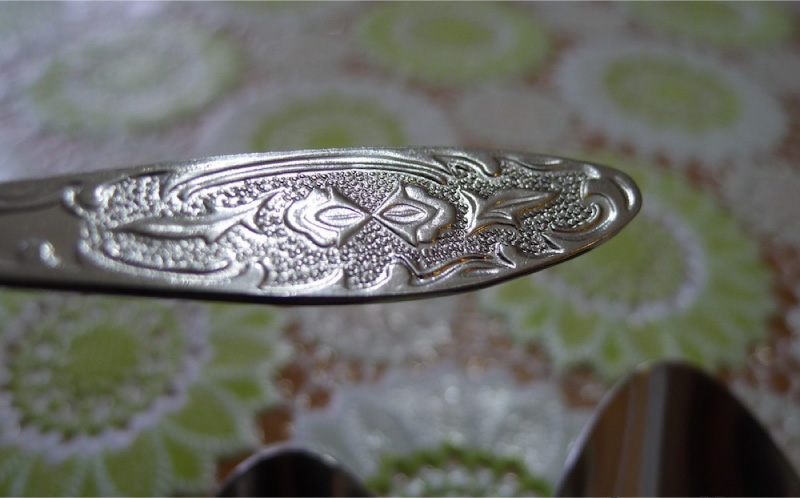Untidy spoons and forks can spoil the impression of even the most beautiful dinner. In fact, stainless steel cutlery is the most practical, because they do not rust (very rarely), they blacken and oxidize much less than nickel silver or silver. But nevertheless, over time, and they fade, they may appear black, greasy, tea or limescale.
- Especially dirt accumulates around convex points, in carving, grooves of patterns and inscriptions. Cleaning the place with the decor is the most difficult and the usual washing, as a rule, does not solve the problem.
- It often happens that the main difficulty is the cleaning of teaspoons (due to plaque from coffee and tea) or the space between the teeth of the forks.

To clean stainless steel spoons and forks at home, you can buy special tools or use the one in your kitchen cupboard and first-aid kit.
12 ways
Method 1. How to clean a lot of forks and spoons at one time by boiling in soda solution
This method is not only the easiest and fastest, but also super-effective, even if your spoons and forks (including teeth) are in a very neglected state.
Step 1. Fill the 3-5-liter saucepan halfway with water (1.5-2 liters), then fold the appliances into it.
Step 2. Pour 2 tablespoons of soda and salt in water (salt can be replaced with citric acid or vinegar).
Step 3. Cook your appliances for 20-25 minutes on medium / high heat. Bringing to a boil is not necessary, exposure to just hot water will be enough.
Step 4. Wait for the spoons and forks to cool and finally rinse them and wipe dry.
- If after 20-25 minutes the devices are not cleaned, you can increase the boiling time.
Attention! This method is not suitable for devices that have enamel or aluminum parts.
Method 2: How to wash stainless steel cutlery if it turns gray
Add a chlorine bleach to the 3-5 liter hot water pot (¼ ), soak your spoons and forks in the resulting solution for 10 minutes, then rinse thoroughly and dry.
Attention! This method is not suitable for devices that have enamel or aluminum parts.
Method 3. How to clean the devices with soda paste and soap
This mixture is excellent for removing hard, sticky dirt and complex stains from a small number of devices. In a small plate or bowl, mix the baking soda and liquid soap to a pasty consistency. Then, using an old toothbrush or a hard side of the sponge, rub the dirty places with the resulting mixture. If the dirt is not completely removed, go over the instruments again with a brush / sponge dipped in vinegar, and finally, rinse them clean and dry.
Method 4: How to shine stainless steel cutlery
To restore shine to faded spoons and forks made of stainless steel, you can wipe them with a soft cloth moistened with a solution of water and 10% ammonia (in a ratio of approximately 9: 1).
Method 5. How to clean the devices with soda paste
Another way to remove old dirt one by one is to wipe the devices with a soft cloth with a thick paste of soda and water.
Method 6. How to clean spoons and forks from greasy and lime scale with vinegar
A touch of grease or lime on the cutlery can be removed by wiping them with a cotton pad dipped in undiluted 9% vinegar. After cleaning the spoons and forks, rinse and wipe dry. This method is good when there was no dishwashing liquid at hand.
Method 7. How to wash spoons and forks with soda
Cola, Fanta, Sprite and other carbonated drinks contain citric acid in their composition, so they do an excellent job with cleaning the devices. And although this method is not the most economical, but sometimes it can be useful (for example, if it is a pity to throw out a drink in which there are no more gases). In addition, it is interesting to test it just for the sake of experiment. Simply soak the devices in a container filled with soda for a few minutes, then rinse and dry quickly.
- It is better to use colorless soda, for example, Sprite.
Method 8. Vegetable oil (any) to remove persistent fatty deposits
Apply oil to a soft, dry cloth and wipe the unit. If desired, you can add lemon juice. After the greasy deposit disappears or becomes less sticky, wash the appliance as usual with dishwashing detergent and water.
- It is best to use olive oil.

Method 9. Cleaning cutlery potatoes
The starch contained in the potato, perfectly cleans the cutlery from the dark residue and returns steel shine. Simply cut the potatoes into halves or slices and clean your spoons and forks. Between the teeth of the fork can be cleaned with thin slices.
Method 10. Tooth powder or paste
Toothpaste or toothpaste are soft abrasives that can scrub all the cavities of your appliances, but not scratch them. All you need to do is to wipe the spoons and forks a little with a damp, soft cloth and powder / paste, then leave them for 10 minutes and finally rinse with clean water.
In this video, you can visually see how quickly toothpaste is cracking down on a tea stain on a spoon.
Method 11. Cleaning devices with ash
This old folk method of cleaning spoons and forks is still relevant to summer residents and lovers of natural cleaning products. To get ash, you need to burn a few birch or aspen branches, then sift it and pour it into the jar. Then this “powder” should be poured onto a cotton pad / cloth, wipe the devices and rinse.
Method 12. How to wash stainless steel spoons and forks in the dishwasher
Sometimes a dishwasher can not cope with cleansing forks and spoons, and after a cycle of washing dishes, appliances can be seen with leftover food or cleaning agent, greasy or limescale, etc. What to do? Perhaps the cause of the problem lies in: contamination of the dishwasher itself (for example, canals of its blades may be clogged), the wrong choice of cleaning agent, which ended in salt (it prevents limescale and softens hard water), incorrect machine operation. If all the problems listed are missing, then you simply fold the devices incorrectly. In order for the dishwasher to launder the cutlery, you need:
Step 1. Before placing the appliances in the dishwasher tray, rinse them in hot water to remove major contaminants. If any food residue stuck, remove them with a sponge.
Step 2. Fold the cutlery in the dishwasher tray so that they do not overlap.
Step 3. Then add detergent to the dishwasher, close its door and start the desired program.Choose the settings that best reflect the state of your cutlery. In most cases, a normal dishwashing cycle is sufficient, but especially dirty spoons and forks may require an intensive cycle with soaking and water temperatures of 90 degrees. If possible, turn off the drying cycle.
Step 4. After completing the dishwasher cycle, wipe each appliance with a soft, dry cloth or paper towel. After manual drying, spoons and forks made of stainless steel always look cleaner than after drying in the car.
Care Tips
- If you want to always keep your appliances in perfect condition, wipe them immediately after each wash. Due to the air drying on the spoons and forks made of stainless steel, water spots may appear.
- Stainless steel is subject to scratches, so try to avoid using hard sponges, brushes and products with coarse abrasive particles. However, places with embossing and patterns can be cleaned with abrasives.
- To clean the forks between the teeth, use toothpicks wrapped in cotton pads with a cleaning agent or old toothbrushes.
- How to wash the kitchen from grease and dirt - 11 recipes for different surfaces
- How to clean the pan outside and inside - 12 best ways
- How to wash the stretch ceiling without stains in 5 steps
- How to clean the pan outside and inside - 8 simple ways for difficult cases
- How to get rid of bugs in the kitchen?
- How to remove scale from the kettle - 6 home remedies
- Clean the microwave in 5 minutes - 6 express methods
- 8 ways to clean pipes from blockages




